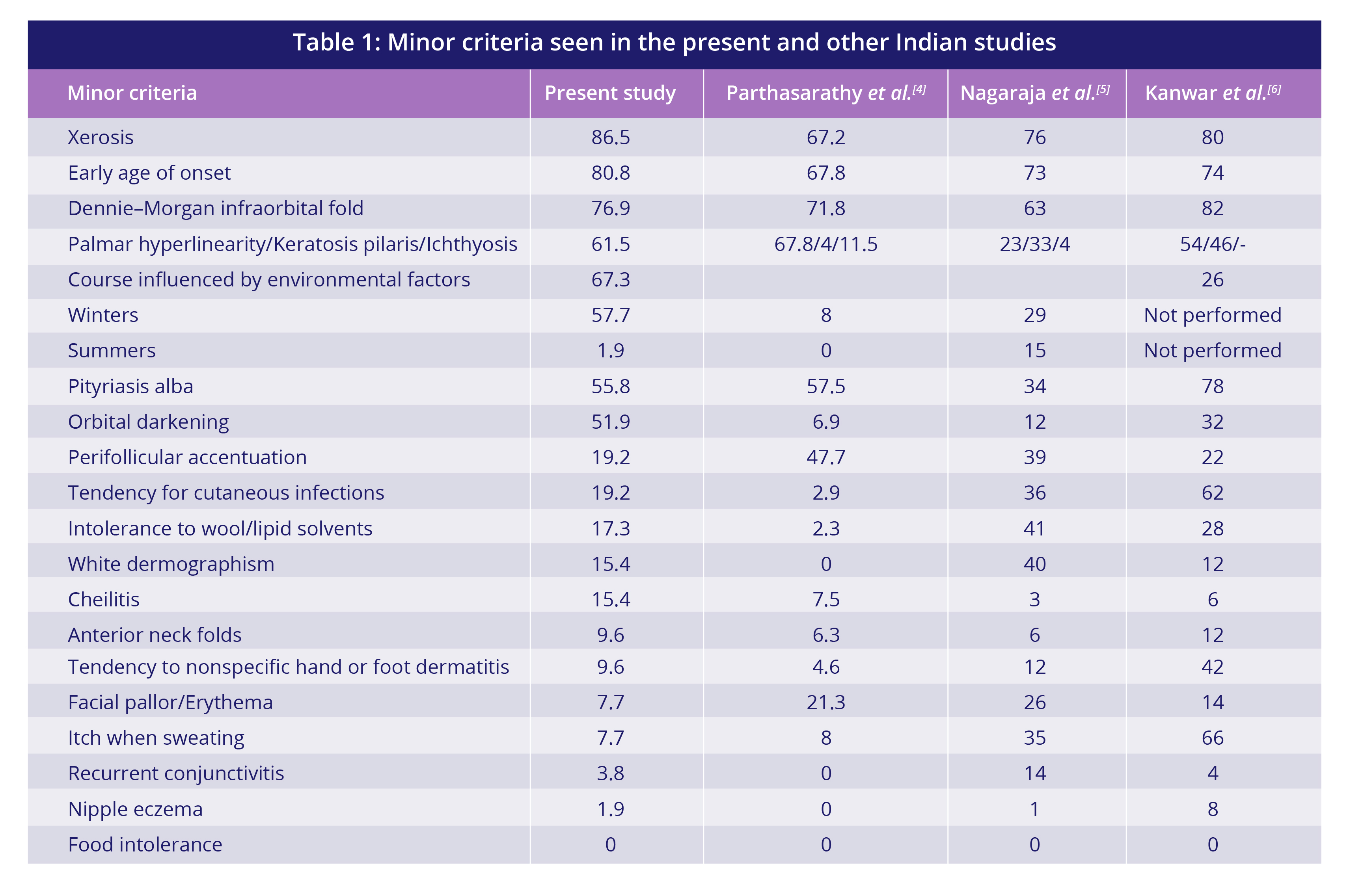DermatoConnect
Diagnostic criteria and therapeutic strategies in atopic dermatitis1
AD seems to be affecting other organs than the skin and there seems to be an increased risk of major depression and anxiety disorders involved with AD. Another concern is that behavioural and emotional factors can have an impact on AD symptoms. Hence, the treatment of AD should also focus on the educational and psychological types of support for people with AD.1
Hanifin and Rajka criteria are two diagnostic criteria that are being used for the diagnosis of atopic dermatitis for many years. However, the disadvantage of the diagnostic criteria is its exhaustive nature.2
Results:
- Among the criteria, 4 major and 21 minor criteria were taken into consideration.2
- The study found that pruritus was the most common major criteria reported in about 94.2% of patients.2
- The study found that majority of the patients demonstrated minority criteria, such as xerosis, Dennie Morgan fold early age of onset (Refer Table 1).2
- Additionally, the study found that peri-follicular-accentuation was lesser in Indian patients as compared to other Asian studies.2
Table 1. Minor criteria seen in the present and other Indian studies

One of the therapeutic strategies for combatting the behavioural and emotional aspects of AD includes internet-delivered cognitive behavioural therapy (ICBT). As the name suggests, ICBT is a psychological treatment provided over the internet instead of a conventional face-to–face CBT. Over ICBT, the therapist supports patients through a protected online communication platform. Participants are provided with some reading materials along with constructive exercises to do for 12 weeks. Although the reading material is the same for all the participants, they are asked to develop individual exercises based on their specific circumstances. During the 12-week period, the participants can reach out to the therapist when required.1
Another strategy is via digital self-care, which differs from the guided approach in the following ways:1
- Shorter duration (approximately 8 weeks)
- Participants receive detailed instructions and guidance and can select exposure exercises from a list of examples.
- A coordinator would supervise the process and could contact inactive participants.
Conclusion
- The minor criteria included xerosis, early age of onset, Dennie–Morgan fold, aggravation because of emotional/environmental factors, palmar hyper‑linearity/ichthyosis vulgaris/keratosis pilaris, pityriasis alba, and orbital darkening.2
- Therapeutic strategies such as ICBT with a therapist or via digital self-care can improve the behavioural and emotional aspects related to AD.1
Key takeaways
- AD can have an aftereffect on the mental health of the patients.1
- AD symptoms can have an impact due to the behavioural and emotional factors associated with mental health.1
- Apart from the conventional strategy, there are online tools to record a patient’s mental health status such as guided CBT or self-guided CBT.1
- Differences among the frequency of different Hanifin and Rajka minor criteria exist among different study populations.2
Reference:
- Kern D, Ljótsson B, Lönndahl L, et al. Brief self-guided digital intervention versus a comprehensive therapist- guided online cognitive behavioural therapy for atopic dermatitis: A trial protocol for a randomised non-inferiority trial. BMJ Open. 2023;13(2):e068908. PMID: 36854583; doi: 10.1136/bmjopen-2022-068908.
- Shetty NS, Lunge S, Sardesai VR. A cross-sectional study comparing application of Hanifin and Rajka criteria in Indian pediatric atopic dermatitis patients to that of other countries. Indian Dermatol. Online J. 2023;14(1):32‒37. PMID: 36776180; doi: 10.4103/idoj.idoj_192_22.
NON-2023-12152 - Date of creation 02/24














